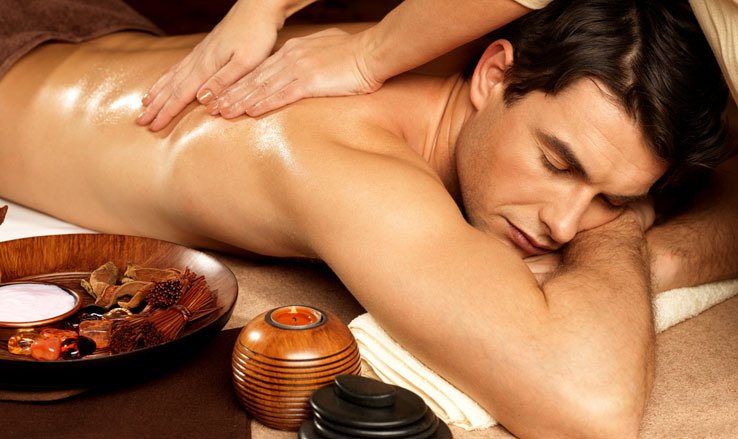Ayurveda Panchkarma
Come Early to Ayurveda for Best Results
With Ayurveda , You never have to stop enjoying Life.
Ayurvedic Treatment for Panchkarma

Panchakarma is a treatment program for the body, mind, and consciousness that cleanses and rejuvenates. It is based on Ayurvedic principles, every human is a unique phenomenon manifested through the five basic elements of Ether, Air, Fire, Water, and Earth.The combination of these elements are three doshas (tridosha): Vata, Pitta, and Kapha, and their balance is unique to each individual. When this doshic balance is disturbed it creates disorder resulting in disease.Panchakarma is done individually for each person with their specific constitution and specific disorder in mind, thus it requires close observation and supervision. Treatment starts with pre-purification Measures of Snehan and Svedana, and then cleansing methods – Shodanas are applied.
Ask for Consult For Doctor
Stages Of Panchakarma:
An Ayurvedic treatment primarily consists of two parts namely, Samshodhana Chikitsa (Bio-cleansing therapy) and Samshaman Chikitsa (Pacifying Therapy). Panchakarma therapy falls under the first category as it is a dynamic procedure to cleanse the body from inside out to rid out the toxins called “Ama” from the body. It is a bio-cleansing regimen, which is intended to balance the morbid doshas and eliminate the toxic elements found in the body. It is a comprehensive procedure that helps improve the immunity of the body.
This body purification process also restores the doshas to their natural equilibrium. The cleansing treatment is usually accompanied by oil applications, massages, therapeutic steam baths along with Ayurveda compliant meals that need to be followed with utmost care as they can otherwise cause harm to the body rather than imparting benefits.
Today’s hectic lifestyles almost inevitably mean that our bodies are exposed to substances they are not equipped to deal with, or which are even toxic. The toxins are accumulated as a result of an improper diet, lifestyle and lack of spiritual and emotional wellbeing. If we are overburdened with these kind of toxic substances, they can begin to accumulate with a detrimental impact on our health and overall well-being. Additionally, it is common for there to be a build-up of metabolic products that have not been adequately broken down; these are also known as “Ama” in Ayurvedic medicine.
From an Ayurvedic perspective, such toxins and residues effectively clog up vital physical channels, thus inhibiting the free flow of energy throughout the body. The consequence is that our equilibrium is disturbed, and illnesses can develop. It is no coincidence that there is frequent mention of “lifestyle diseases”; as the connection with our lifestyle is an obvious. So, a Panchakarma treatment aims to liberate the body from toxins and residues that have accumulated over time.
At the heart of a Panchakarma treatment are the five cleansing procedures. These are called Vaman, Virechan, Basti, Nasya, and Raktamokshana. These terms stand for laxative measures, herbal enemas, vomiting therapies, nasal rinsing, and phlebotomy. These procedures help cleanse the gastrointestinal tract, esophagus, respiratory tract, and blood vessels of unwanted substances.
Unique to Áyurveda, this is a process of completely expelling toxins from the body. First, through
Palliation and purification, one loosens toxins lodged in the body. This allows the toxins to return through the bloodstream to their original sites in the gastrointestinal tract. Once there, the toxins can be completely expelled from the body through five methods known as panchakarma. Ayurveda Panchakarma (five actions) actually includes three stages:
- Preliminary (Palliative) employing oil and sweating methods (Snehana and Svedhana) [often used throughout the year as general maintenance and preventive program]
- Primary purificatory practices (Panchakarma) use emesis, purgation, enemas, and nasal therapy.
- Post Panchakarma therapies of rejuvenation and detoxification.
Panchakarma Therapy Consists Of Five Cleansing Aspects:
- Emesis (VAMANA)
- Purgation (VIRECHANA),
- Medicated enemas (BASTI)
- Medicated nasal oils (NASYA)
- Toxic bloodletting (RAKTAMOKSHAN)
Vamana
Vamana is a guided emesis, which expels the accumulated toxins through vomiting. The best time to practice is during late spring or early summer (Kapha provoking time) and close to the full moon when the water element is high, one day after snehana and svedhana, after a good sleep, after food is digested, or after sunrise—6:00 to 9:00 or 10:00 a.m. (Kapha time).
Preliminary Therapies (Purva Karma) before Panchakarma is employed, we first reduce the excess doshas and cleanse ama (toxins) from their system. This is achieved by eating lightly spiced meals according to their dosha. After palliation therapies remove toxins, two main preliminary therapies are used, oleation and sweating. Both begin to unseat the toxins that have moved and located themselves in places they do not belong. These relocated toxins are the cause of ill health or imbalances.
Virechana
Purgatives eliminate excess Pitta from their site in the liver, gall bladder, and small intestine (it does not deal with the large intestine). The bitter purgatives are used depending on the concern. This purification therapy is preferred for Pitta and liver disorders (e.g., gall stones). According to Ashtanga Hridayam, the time of purgation is after Vamana (emesis), and after 9:00a.m. (the end of the Kapha time of the day). Similar preliminary treatments of Snehana and Svedana are incorporated and post that the therapy is performed
Nasya
Áyurveda suggests that the nose is the gateway to the head. Thus, nasal herb therapy is used for healing diseases of the throat, neck, head, and senses (e.g., ears, nose, eyes, etc.). Nasya is also used for toning and strengthening these areas. It is known to improve vision, smell, and hearing, prevent greying hair, hair fall, stiff necks, headaches, and lockjaws. Nasyas are taken before meals.
It is recommended to ideally take these nasyas in the morning on an empty stomach and avoid taking them on cloudy days
Raktamokshana
Therapeutic toxic bloodletting (Raktamokshana) involves releasing toxic blood from various body sites. The impure blood is let out as it causes various skin and body illnesses. 2 to 8 ounces is the general amount of the released. Bloodletting is useful when wishing for immediate results with Pitta disorders such as skin, liver, spleen, and conditions like gout, headaches, and hypertension. Late summer through early fall is the best time for this procedure.
Shirodhara
As per Ayurveda, Shirodhara is specifically advised when there is an aggravation of Vata and Pitta Doshas in the mind and body. An augmentation of Vata dosha results in insomnia, racing thoughts, anxiety, stress, dryness, hair fall, pain, and aches, whereas an aggravated Pitta dosha causes anger, irritability, frustration, burning sensation, migraines, and premature greying of the hair. Shirodhara is said to be beneficial when these Vata and Pitta imbalances create the above concerns.
Our Treatment Philosphy
Every person is unique, hence treatment for the person’s disease must be unique too. Sandhya Medicity doctors take
the ayurveda approach, which includes:

Personalized Treatment and Medicines
Completely personalized authentic Ayurvedic medicines based on thorough diagnosis of the root-cause

End-To-End Relief Tracking
Throughout your treatment journey, a team of health coaches stay connected with you to track your relief progress and help with your health queries.

Diet & Lifestyle Plans Customized Just for You
Customized remedy including diet, therapy and lifestyle planners designed by your doctor to compliment the medicines for holistic treatment of the root-cause

